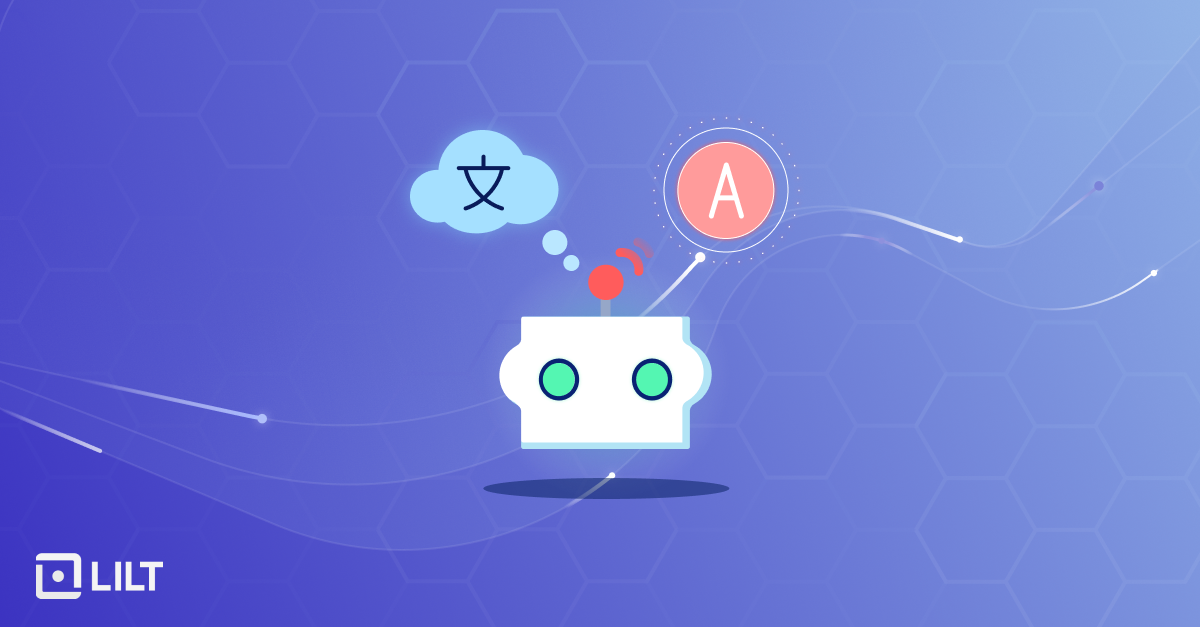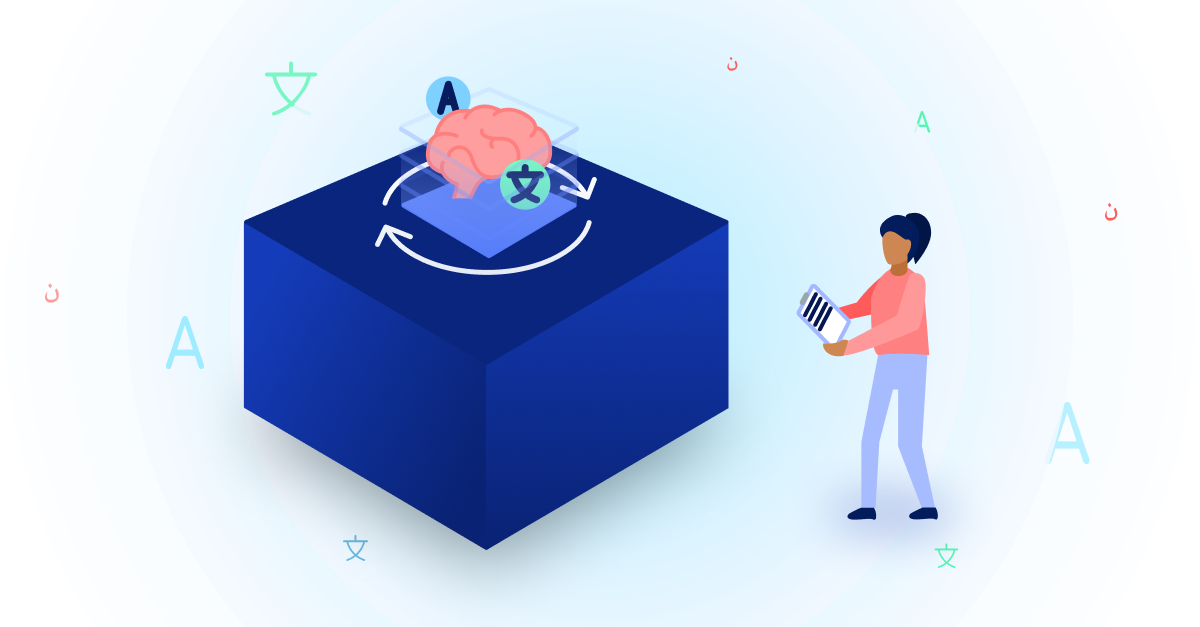Why Businesses Should Invest in an AI Translation Solution

Maintaining an edge in today's competitive market environment is crucial. Businesses that don't adopt new technologies risk falling behind their competitors and finding it difficult to compete in the current market. The exponential rise in interest for innovative AI-based tech solutions shows no signs of slowing down, as teams and companies continue to adopt artificial intelligence (AI) tools for optimizing a number of business processes.
Translation is one key area of your business where AI can make a significant impact, unlocking a whole range of benefits, including improved communication and profitability. In this blog post, we’ll help you understand these cutting-edge technologies and how they can help your organization.
Now, let's dive deep into why companies should invest in an AI strategy for translation and localization.
What is an AI Translation Solution?
Imagine a world where language barriers cease to exist, enabling seamless communication between individuals regardless of their native language. This is the future that AI innovators are working toward! An AI translation solution is an integrated system of people, tools, and processes centered around machine systems and datasets to translate words with higher accuracy, cost efficiency, and scale.
High-impact AI translation models can significantly improve the effectiveness of linguists and the quality of fully automated customized machine translation. The combination of these translation workflows create a holistic AI translation solution, enabling enterprise content creators to reach their global audience.
At Lilt, our Contextual AI Engine runs on our large language models purpose-built for translation. These models are fine tuned by linguist feedback in real time. As a result, Lilt’s Contextual AI Engine is able to deliver translated content with higher accuracy, ultimately driving improved translation quality and increased alignment with brand voice.
Investing in self-learning translation models is just one way companies can scale and improve their localization processes. As AI translation solutions continue to improve and adapt to evolving language trends, cultural nuances, and colloquial expressions, individuals and brands are empowered to confidently interact in a globally connected world.
.png?width=200&height=174&name=Services%20(3).png)
5 Keys to Success When Evaluating an AI-Enable Translation Solution
1. Find a reliable partner who can meet all of your needs. Be sure to consider quality, scale, speed, and cost-efficiency. Partner with a provider that offers customizable solutions that can be tailored to your business and has experience in your industry to ensure seamless integration into your workflow. Additionally, don’t forget to evaluate their security measures and data privacy policies to ensure your confidential information will be protected.
2. Not all AI technologies are built the same. As more companies start to call themselves an “AI company,” it’s important for readers to take the time to understand what each company means when they label their solutions as “AI” and how effectively they are leveraging it. For example, effectiveness of AI may vary depending on the size of its large language models and whether or not the technology was built and optimized for a specific task or application. Therefore, evaluating each AI solution carefully before implementing it in a particular context is crucial.
3. Ensure that AI translation models are tailored to industry and domain-specific content. Even better would be to have models retraining occur instantly rather than manually a few times annually! This can be achieved by utilizing machine learning algorithms that automatically adapt to new data and improve the translation quality over time. Additionally, regularly updating the training data used to build the AI models can help ensure they remain accurate and relevant.
4. Think about how your AI strategy balances quality, cost, and speed. What can be accomplished at scale depends significantly on how AI translation solutions use human ingenuity. Therefore, balancing AI's efficiency and the human touch is crucial to achieving high-quality results. With the right combination of AI and human input, organizations can achieve faster turnaround times while maintaining accuracy and quality.
5. Some AI translation solutions may use relevant localization resources typically found in conventional LSPs, such as translation memories and term bases. For those looking to maximize translation quality, speed, efficiency, and scale, look for AI technology that’s purpose-built for translation and goes beyond a traditional LSP with instantly retraining models.
"We wanted a more automated, more streamlined solution where the [Contextual AI] Engine learns and improves right as we use it. This is what the Lilt solution offered us."
.png?width=59&height=59&name=Frame%2028%20(1).png) Loïc Dufresne de Virel
Loïc Dufresne de Virel
Head of Localization, Intel
What are the Benefits of AI Translation Solutions, and Why Should Companies Invest Now?
Today, most global companies are faced with increasing pressures to scale and personalize their digital customer experiences—all without increasing budget. As teams are continued to be challenged to do more with less, AI can help make that happen. If you don’t already have an AI strategy in place, now might be the time to conduct an AI strategy evaluation.
Artificial intelligence technology has advanced and become more accessible, making it possible for businesses to streamline their operations and improve the quality of their interactions with customers.
For this reason, keeping up with the most recent developments in artificial intelligence technology is necessary to maintain a competitive edge in the market. When applied effectively, AI-based translation technology can increase translation velocity and help scale your localization program to create a dynamic global experience for your customers—all while ensuring high translation quality and reducing cost.
By combining the strengths of both humans and machines, businesses can achieve greater efficiency, accuracy, and cost-effectiveness in their operations.
How Does Lilt Measure Up Against the Industry?
When comparing Lilt to the legacy players in the localization industry, the impact of Lilt’s cutting-edge AI solution for enterprise translation stands out. While traditionally, the industry has focused purely on output, Lilt goes one step further, guaranteeing quality while improving business outcomes by optimizing AI translation strategies.
The powerful combination of the Contextual AI Engine, Connector APIs, and Human Feedback sets Lilt apart from its competitors. This unique stack empowers organizations to build an effective multilingual experience for their global customers. As the leading AI solution for enterprise translation, Lilt outperforms on a number of key measures, when compared to traditional LSPs:
• Pricing - Through optimizing project management with translations with our connected workflow, our customers have experienced a reduction in costs of forty percent year over year, in addition to process improvements across the board in each department.
• Speed - The turnaround time at Lilt is 2-3x faster than that of traditional LSPs.
• Quality - Experience the Lilt promise of unparalleled excellence, where quality reigns supreme.
Looking to the Future of AI
Because of the wide array of distinct AI technologies now available, it’s essential to learn which translation models and systems are best suited for your team. Ask for product demos, pricing, and key solution capabilities to ensure that the AI technology you select caters to your unique requirements.
Lastly, it is essential to consider the level of support and maintenance that the service provider provides. This guarantees that any problems or worries can be resolved promptly.
Take a look at Lilt’s platform tour to see our technology for yourself.
.jpg?width=659&height=136&name=Blog_CTA%20(1).jpg)


